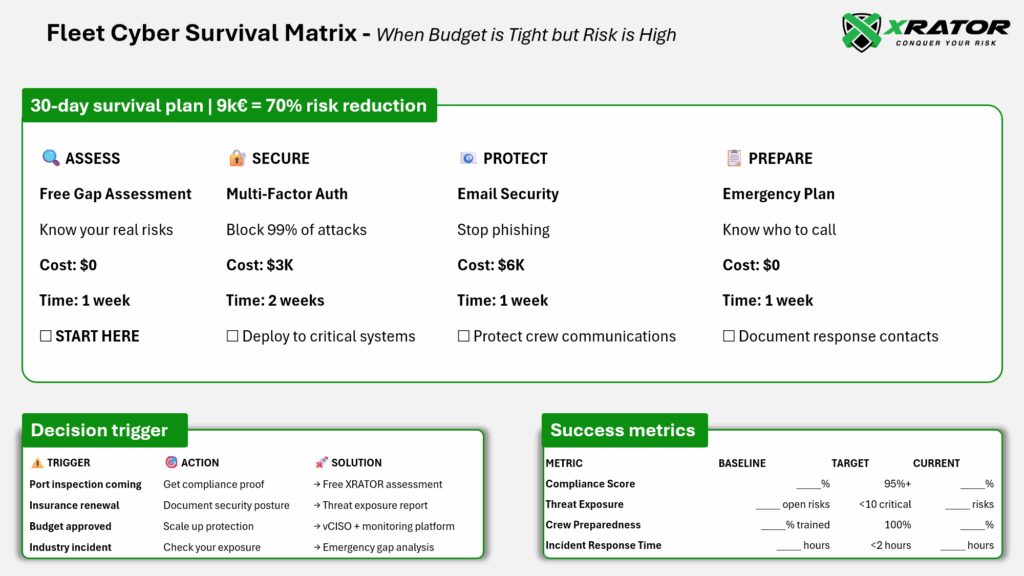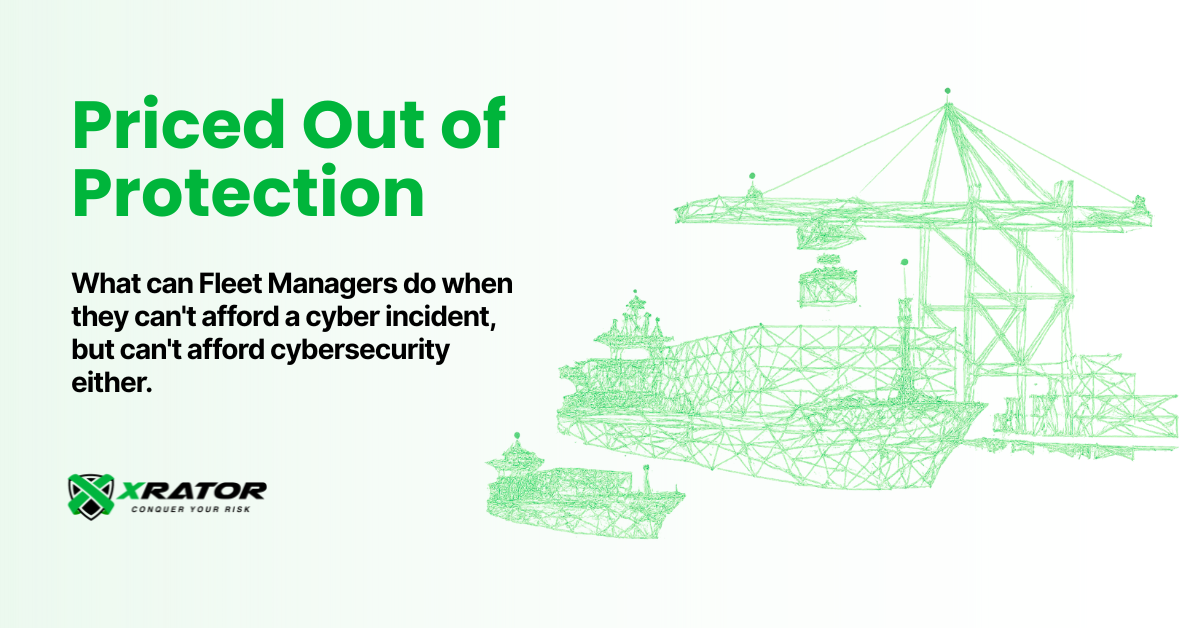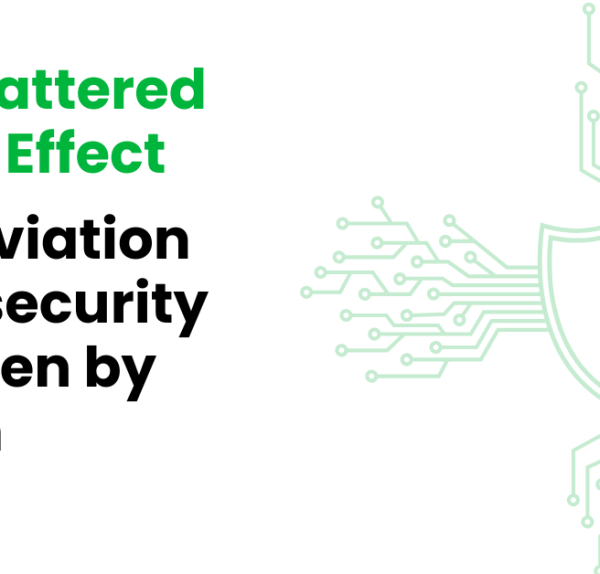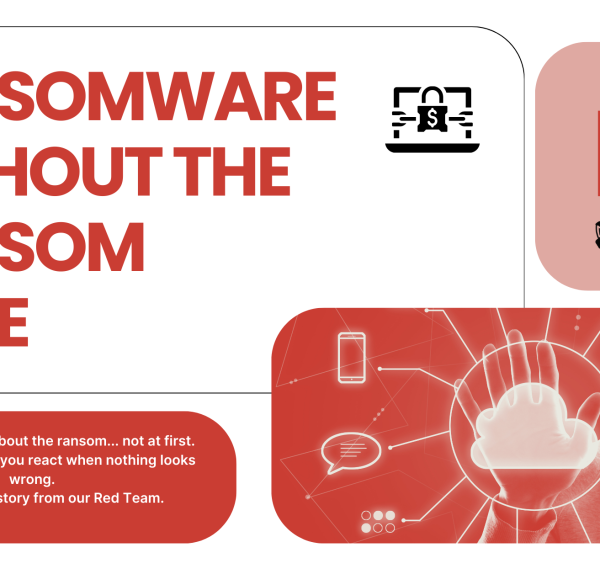The brutal economics of maritime cybersecurity hit fleet managers like a rogue wave: spend tens of thousands on protection you hope never to use, or risk losing hundreds of thousands when attackers inevitably strike. With over 1,800 vessels targeted in the first half of 2024 alone, and average incident costs reaching $550,000, the question for SMB maritime operators isn’t whether to invest in cybersecurity, but how to do it without sinking the budget.
Maritime cybersecurity spending has reached a critical inflection point in 2025. One-third of maritime companies spend less than $100,000 annually on cybersecurity management. Meanwhile, new regulatory requirements from the IMO, IACS, and Coast Guard have transformed cybersecurity from operational luxury to mandatory compliance expense. For regional container operators, offshore support vessels, ferry companies, bulk shippers, and fishing operations, this creates an impossible balancing act between regulatory compliance, operational security, and financial survival.
The maritime industry’s unique challenges (24/7 global operations, legacy operational technology, crew rotation, and satellite connectivity constraints) demand specialized approaches that generic SMB cybersecurity guidance simply cannot address.
| Incident Cost Components | Small Fleet (1–5 vessels) | Medium Fleet (6–25 vessels) |
|---|---|---|
| Direct Costs | ||
| Ransom payments | $50,000–$500,000 | $200,000–$2,000,000 |
| System recovery | $25,000–$150,000 | $100,000–$750,000 |
| Forensic investigation | $15,000–$75,000 | $50,000–$200,000 |
| Operational Costs | ||
| Vessel downtime | $10,000–$50,000/day | $25,000–$100,000/day |
| Cargo delays | $5,000–$25,000/day | $15,000–$75,000/day |
| Alternative routing | $2,000–$15,000/day | $10,000–$50,000/day |
| Regulatory & Legal | ||
| Fines and penalties | $10,000–$100,000 | $50,000–$500,000 |
| Legal fees | $25,000–$150,000 | $100,000–$500,000 |
| Reputation Impact | ||
| Customer compensation | $50,000–$200,000 | $200,000–$1,000,000 |
| Insurance premium increases | 25–50% increase | 50–100% increase |
| Total Potential Cost | $450,000–$1,500,000 | $1,200,000–$6,000,000 |
Cost of Cyber Incident vs. Prevention Investment including hidden costs
This guide provides concrete budget benchmarks, implementation priorities, and cost-effective strategies specifically designed for small-to-medium maritime operators facing these exact constraints.
Don’t let your budget dictates your cyber insecurity: get a free external attack surface assessment for your systems.
1. Recommended budget frameworks for SMB maritime operators
The harsh truth about maritime cybersecurity spending: most SMB operators are dramatically under-investing relative to their risk exposure. Industry research reveals that 70% of maritime companies allocate up to $50,000 annually on cybersecurity, while the cost of a single successful attack averages $550,000. An eleven-fold difference that makes the investment case mathematically obvious.
| Fleet Size | Annual Revenue Range | Recommended Cyber Budget | % of Revenue | Budget Allocation Breakdown |
|---|---|---|---|---|
| Small (1–5 vessels) | $5–15M | $75,000–$150,000 | 1–2% | Personnel: 40% / Tech: 30% / Compliance: 20% / Insurance: 10% |
| Medium (6–25 vessels) | $15–75M | $200,000–$500,000 | 1.5–2.5% | Personnel: 35% / Tech: 35% / Compliance: 20% / Insurance: 10% |
| Large SMB (25+ vessels) | $75M+ | $500,000+ | 2–3% | Personnel: 30% / Tech: 40% / Compliance: 20% / Insurance: 10% |
Maritime Cybersecurity Budget Framework by Fleet Size
For small fleets (1-5 vessels), establish a minimum annual cybersecurity budget of $75,000-$150,000, representing roughly 1-2% of annual revenue. This baseline provides essential regulatory compliance and basic protection without overwhelming operational budgets. Companies operating medium fleets (6-25 vessels) should budget $200,000-$500,000 annually, scaling with fleet complexity and operational scope.
Budget allocation patterns that work in practice follow a proven formula: allocate 35-45% to personnel and training (including Maritime Security Officer designation and crew awareness programs), 25-35% to technology and software (focusing on maritime-specific solutions rather than generic business tools), 15-25% to compliance and regulatory requirements (IMO 2021 implementation, IACS E26/E27 standards, port state control preparation), and 10-20% to incident response and insurance (including specialized marine cyber coverage).
The regulatory compliance baseline alone requires significant investment. IMO 2021 implementation costs range from $50,000-$150,000 per company for SMS integration, risk assessments, and training programs. The new IACS Unified Requirements E26/E27, effective July 2024, add $100,000+ per newbuild vessel for cyber resilience systems.
Real-world spending patterns show maritime SMBs face higher baseline costs than general businesses due to operational technology convergence requirements, 24/7 monitoring needs across time zones, and specialized maritime expertise premiums. While general SMBs average 7-12% of IT budgets on cybersecurity, maritime operators typically require 10-15% due to unique OT/IT integration challenges and regulatory complexity.
2. Recommended budget frameworks for SMB maritime operators
Tier 1: Regulatory must-haves form the foundation of any viable maritime cybersecurity program. Multi-factor authentication leads this category at just $500-$5,000 annually while blocking most of automated attacks, one of the highest ROI investment available. Email security platforms cost $2,000-$10,000 annually and prevent 95% of phishing attempts that target crew and operational systems. Cybersecurity risk assessment and SMS integration, required by IMO Resolution MSC.428(98), costs $25,000-$75,000 for initial implementation but provides the regulatory foundation for all other investments. Maritime-specific security awareness training delivers exceptional value at $25-$75 per crew member annually with up to 50x return on investment by preventing human-error incidents.
Tier 2: High-impact operational security includes network segmentation between IT and OT systems ($15,000-$75,000 initial setup) that contains breaches and reduces average incident costs by 30%. Twenty-four hour security monitoring services ($25,000-$100,000 annually) prove essential for global operations, providing coverage across all time zones while vessels operate in remote locations. Backup and disaster recovery systems ($10,000-$50,000 setup plus ongoing costs) ensure business continuity when attacks succeed, while automated patch management ($5,000-$25,000 annually) prevents 85% of vulnerability-based attacks with careful scheduling around operational requirements. Finally cyber threat exposure assessment platform detect and close proactively and continuously all open doors an intruder could use to enter, for a cost between $15,000 and $60,000.
Tier 3: Advanced capabilities include threat detection platforms ($50,000-$200,000 annually) that save an average $2.2 million per breach for organizations experiencing sophisticated attacks. OT-specific security platforms ($75,000-$300,000 per vessel) protect critical navigation, engine control, and cargo management systems but represent longer-term investments for larger fleets.
This investment sequencing strategy proves crucial for budget-conscious operators.
Phase 1 (months 1-12) focuses on foundation and compliance with $50,000-$200,000 total investment covering MFA, email security, risk assessment, SMS integration, network segmentation and external attack surface management.
Phase 2 (months 12-24) emphasizes enhanced protection with $75,000-$300,000 investment in continuous monitoring capabilities, IT/OT vulnerabilities prioritization and comprehensive training programs.
Phase 3 (months 24+) builds advanced capabilities with $100,000-$500,000 investment in AI-driven tools and specialized OT protection.

3. Buy versus build analysis for maritime SMBs
The managed security provider advantage becomes compelling when factoring maritime-specific requirements. MSP services typically cost $110-$400 per user monthly, providing immediate access to cybersecurity expertise without 6-12 month hiring delays that plague the maritime industry. For SMB maritime operators, MSPs deliver 30-50% cost savings compared to building equivalent in-house capabilities, particularly when considering 24/7 monitoring needs across global operations.
In-house cybersecurity costs quickly escalate beyond initial calculations. A qualified cybersecurity analyst commands $100,000+ annually, while specialized maritime cybersecurity expertise demands significant premiums. Security tools and infrastructure require $10,000-$100,000+ initial investment, with ongoing training and certification costs of $5,000-$15,000 per employee annually. Incident response capability requires multiple specialists costing $300-$1,000 hourly during critical incidents.
Hidden costs of internal teams include high turnover risk in the competitive cybersecurity job market, knowledge gaps around maritime-specific threats and regulations, and the compliance burden of keeping current with evolving IMO, IACS, and Coast Guard requirements. Many SMB maritime companies lack the scale to justify dedicated internal cybersecurity positions, making expertise sharing across limited staff operationally risky.
The hybrid approach delivers optimal results for many SMB maritime operators: partner with maritime-specialized MSPs for 24/7 monitoring and incident response, maintain internal team members for day-to-day operations and vessel-specific needs, and engage specialized maritime consultants for compliance audits and regulatory guidance. This model provides comprehensive coverage while controlling costs and maintaining operational flexibility.
| Component | In-House Team | Maritime MSP | Hybrid Approach |
|---|---|---|---|
| Personnel Costs | |||
| Cybersecurity Analyst | $100,000+ annually | Included in service | Part-time internal + MSP |
| Maritime Specialist | $120,000+ annually | Included in service | Consultant as needed |
| Training & Certification | $5,000–$15,000/person | Included in service | $2,000–$5,000/person |
| Technology Costs | |||
| Security Tools | $50,000–$200,000 | Included in service | $20,000–$75,000 |
| Infrastructure | $25,000–$100,000 | Included in service | $10,000–$40,000 |
| Operational Costs | |||
| 24/7 Monitoring | Additional staff needed | $110–$400/user/month | MSP for monitoring |
| Incident Response | $300–$1,000/hour | Included in service | MSP for incidents |
| Compliance Management | Internal overhead | Included in service | Shared responsibility |
| Total Annual Cost | |||
| Small Fleet (20 users) | $200,000–$400,000 | $75,000–$150,000 | $100,000–$200,000 |
| Medium Fleet (50 users) | $350,000–$600,000 | $150,000–$300,000 | $200,000–$350,000 |
| Break-Even Analysis | >100 users | <100 users | 25–100 users |
In-House vs. Outsource Cybersecurity Cost Comparison Analysis For Fleet Managers
Maritime-specific MSP advantages include understanding of IACS E26/E27 requirements, IMO guideline implementation, and operational technology security challenges unique to maritime environments. Generic MSPs often lack this specialized knowledge, making maritime-focused providers worth premium pricing for comprehensive protection.
4. Top 5 starter investments for maximum protection per dollar
Multi-factor authentication represents the single highest-ROI cybersecurity investment available to maritime SMBs. At $500-$5,000 annually, MFA blocks most of automated attacks while requiring minimal technical complexity or operational disruption. Implementation takes 2-4 weeks and protects both remote vessel access and shore-side systems from credential-based attacks that dominate maritime cyber incidents.
Security awareness training specifically designed for maritime operations delivers up to 50x return on investment at just $25-$75 per crew member annually. Given that a majority of successful attacks exploit human error, targeted training addressing maritime-specific phishing attempts, operational technology risks, and incident response procedures provides essential protection. Focus on multilingual programs addressing international crew requirements and practical scenarios relevant to vessel operations.
Email security platforms costing $2,000-$10,000 annually prevent 95% of phishing attempts that specifically target maritime crew and operational personnel. Advanced email filtering with maritime threat intelligence protects against attacks designed to exploit crew communication patterns during voyages, while protecting critical operational communications from compromise.
Automated backup systems with offline capabilities ensure business continuity when ransomware attacks succeed. At $10,000-$30,000 initial setup plus ongoing cloud storage costs, comprehensive backup protection enables rapid recovery from encryption attacks without paying ransom demands. Maritime operations require specialized backup strategies accounting for satellite connectivity constraints and operational system dependencies.
Network segmentation between IT and operational technology systems provides fundamental attack containment at $15,000-$75,000 initial investment. Proper segmentation prevents business system compromises from affecting navigation, engine control, or cargo management systems, reducing incident severity and enabling continued operations during IT system recovery.
Implementation timeline for maximum impact:
- Deploy MFA and email security first (weeks 1-4),
- implement training programs and backup systems next (months 2-3),
- then establish network segmentation (months 3-6).
This sequence provides immediate protection while building comprehensive defense capabilities over six months.
5. Industry insights from maritime fleet managers
The post-Maersk reality fundamentally changed maritime cybersecurity perspectives, according to industry research from BIMCO and maritime trade publications. The $250-300 million NotPetya losses demonstrated that cybersecurity failures create organization-wide operational crises, not just IT problems. As one maritime cybersecurity expert noted: “The approach changes from an if-it-happens problem to a when-it-happens problem.”
Survey data from maritime professionals reveals persistent gaps between awareness and preparedness. Only 40% of maritime organizations believe they invest adequately in cybersecurity, while 58% have incorporated cybersecurity guidelines into operations following major industry incidents. However, 70% of respondents still allocate less than $50,000 annually to cybersecurity management—a disconnect that leaves most operators vulnerable to financially devastating attacks.
Fleet manager feedback consistently emphasizes practical implementation challenges. Resource constraints dominate decision-making, with maritime SMBs typically lacking dedicated cybersecurity expertise. Training gaps persist across international crews, requiring multilingual, culturally-adapted security awareness programs. The human element consistently ranks as the biggest perceived weakness, yet many operators struggle to implement effective training due to crew rotation and operational schedules.
Budget justification remains the primary obstacle according to maritime professional discussions. Fleet managers report difficulty demonstrating ROI to cost-conscious ownership groups who view cybersecurity as non-revenue generating expense. Industry forums reveal frustration with vendor pricing transparency and lack of maritime-specific benchmarking data for budget planning.
Regulatory compliance drives significant investment decisions, with IMO 2021 requirements creating mandatory minimum cybersecurity capabilities. 83% of maritime companies would cancel vendor contracts over poor cybersecurity practices, demonstrating supply chain security concerns. Port state control authorities increasingly scrutinize cybersecurity compliance during inspections, making regulatory preparedness operationally critical.
Real operational impacts from recent maritime cyber incidents provide sobering context for budget decisions. The 2024 DNV ShipManager attack affected approximately 1,000 vessels, while coordinated port attacks in April 2024 caused over $500 million in losses through operational disruptions. These incidents demonstrate that cybersecurity failures cascade beyond individual companies to affect entire supply chains and operational networks.
6. Your next steps toward cyber-resilient operations
Start with immediate wins that provide maximum protection per dollar invested. Implement multi-factor authentication across all systems within 30 days—this single step prevents the vast majority of credential-based attacks for minimal cost. Deploy email security platforms simultaneously to protect against phishing campaigns targeting crew and operational personnel.
Conduct comprehensive cybersecurity gap analysis using maritime-specific frameworks that address both IT and operational technology systems. Engage qualified maritime cybersecurity consultants who understand IMO requirements, IACS standards, and operational technology unique to marine environments. This assessment provides the foundation for all subsequent investment decisions and regulatory compliance efforts.
Establish partnerships with maritime-specialized managed security providers who can deliver 24/7 monitoring and incident response capabilities without the overhead of building internal teams. Look for providers with demonstrated maritime industry experience, understanding of vessel operational constraints, and capability to address both business and operational technology security requirements.
Develop phased implementation strategy that balances immediate protection needs with long-term capability building. Budget for regulatory compliance first (IMO 2021, IACS E26/E27), then implement high-ROI security controls (MFA, training, email security), followed by comprehensive protection systems (network segmentation, monitoring, incident response).
Create cybersecurity budget planning framework that allocates 1-2% of annual revenue to cyber protection, with minimum annual investment of $75,000-$150,000 for small fleets. Establish budget allocation guidelines: 40% personnel/training, 30% technology, 20% compliance, 10% insurance/incident response. Review and adjust allocations quarterly based on threat evolution and operational changes.
The window for proactive cybersecurity investment continues closing as attacks intensify and regulatory requirements expand. Maritime SMBs that establish comprehensive cyber protection now will operate with competitive advantages, while those delaying investment face escalating risks of devastating operational disruptions, regulatory penalties, and financial losses that threaten business survival.
Ready to Plan Your Cyber Budget?
The path to cyber safety doesn’t require unlimited resources or technical expertise, it requires focus on the measures that actually prevent the incidents affecting SMB maritime operators.






